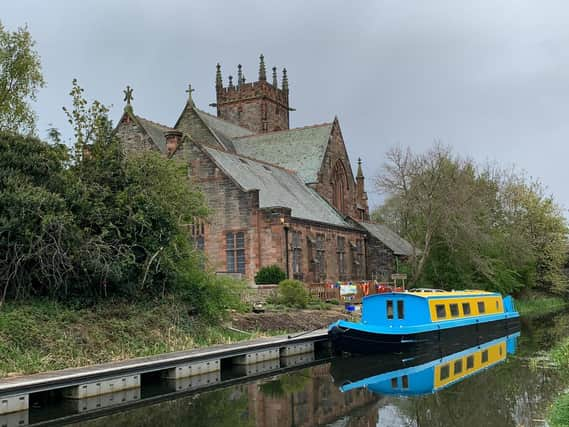Empty churches are leaving a troublesome building legacy - John McLellan


A list revealed last week by the charity Scotland’s Churches Trust identifies those most at risk of closure and it’s no surprise to me that our nearest, the magnificent red sandstone Polwarth Parish Church, is among them.
Polwarth lost its dedicated minster a couple of years ago, and the board outside has the name daubed over like one of those population signs outside Hollywood Wild West towns with the figure crossed out after every shoot-out.
Advertisement
Hide AdAdvertisement
Hide AdThere are services, but the bells no longer ring each Sunday morning ─ OK, it was a recording ─ and the carols don’t chime out on Christmas Eve before a Watchnight service. The trickle of well-dressed elderly ladies heading for spiritual replenishment every Sunday morning has now dried up.
When we moved into the district 20 years ago, funerals and weddings were frequent, but now I can’t remember the last time I saw confetti blowing along Polwarth Terrace, or a hearse awaiting its latest passenger.
The building is still used most days by mother and toddler groups, a pop-up café and some youth groups, and I’m sure there was a line-dancing thing on the other night, or else it was just a gathering of people who like cowboy hats. Shamefully, the only time I go in is for elections when it’s a polling station.
With its place on the canal, it’s become home to a large yellow barge owned by the charity People Know How, and in the two and a half years since it became operational it has made 200 trips, not exactly the frequency of a ro-ro ferry, but at least it gets more use than the Scottish Government’s Glen Sannox bathtub.
Advertisement
Hide AdAdvertisement
Hide AdGeorge Watson’s primary school carol concerts apart, there is no need for such a vast worship place and it’s a similar story at Craiglockhart, and St Michael’s on Slateford Road, less than ten minutes’ walk away.
They were built with one purpose, to honour and worship God at a time when pews were packed, and Victorian churches were in an arms race to demonstrate both the piety and prestige of the parishioners.
The Church of Scotland can’t be expected to maintain empty buildings for the sake of it, but they can’t all be turned into the next Queen’s Hall or Festival Hub, and as bodging them into flats is an expensive and complicated business the wrecking ball might yet be the fate of many as more become available in a short space of time.
Polwarth was itself an amalgamated church, absorbing the congregation of the defunct John Ker Memorial Church, a magnificent building demolished in the 1980s to make way for an unmemorable block of retirements flats which carry the name.
Advertisement
Hide AdAdvertisement
Hide AdIt’s a stunning place. The view west towards its tower from the canal towpath is like a Constable painting, not what most visitors would expect in Edinburgh. At night, there is something reassuring when its lights are on.
But even if the shell is retained, something dies when churches are no longer places of worship, when they stop marking the births, marriages and deaths of the people making up the communities they symbolise. And I must share the blame.
Comment Guidelines
National World encourages reader discussion on our stories. User feedback, insights and back-and-forth exchanges add a rich layer of context to reporting. Please review our Community Guidelines before commenting.
